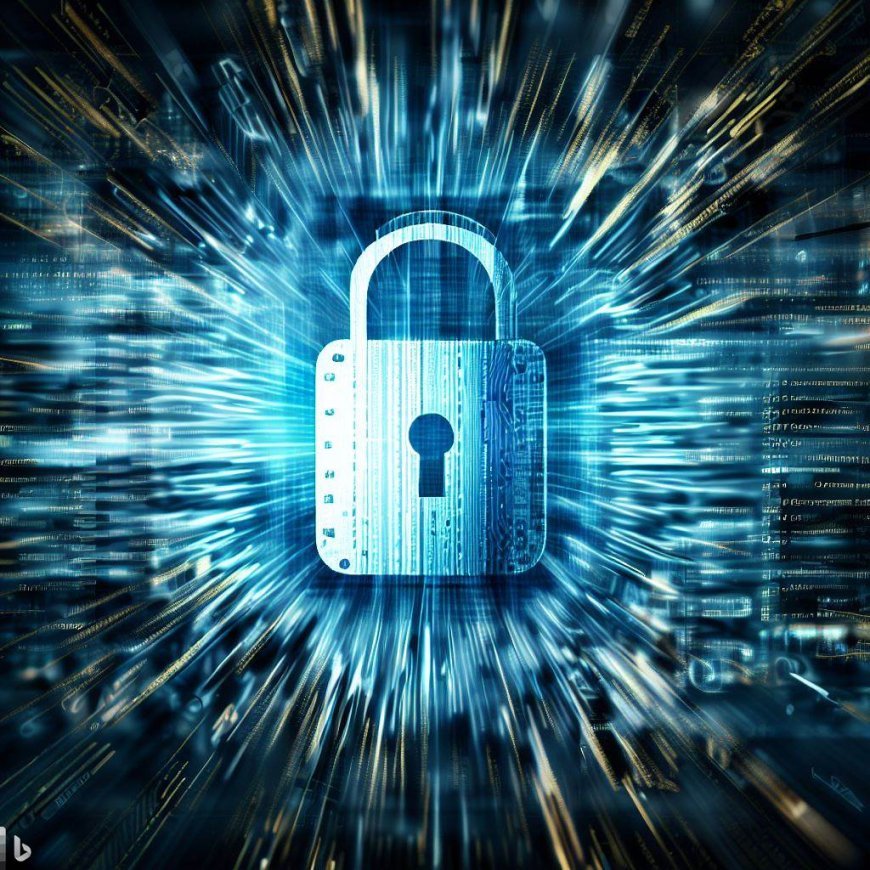Ensuring Digital Safety: A Comprehensive Guide to Cybersecurity
Cybersecurity! Dive into a no-nonsense guide for rock-solid digital safety. Master key strategies to safeguard your online world.

Introduction
Cybersecurity has become a vital part of our lives in the current digital era.
Technology is advancing quickly, and as a result, we are more linked than ever. However, this increased connectivity also brings forth various risks and threats to our personal and professional information. Cybersecurity is the practice of preventing unauthorized access, theft, and damage to our equipment, networks, and data.
In this post, we'll examine the value of cybersecurity and go into several tactics and best practices for remaining secure online.
The Importance of Cybersecurity
Cybersecurity is crucial in an interconnected society for protecting sensitive data.
It guarantees the privacy, availability, and integrity of data, shielding people, organizations, and governments from potential online dangers.
We run the risk of falling prey to different cyberattacks, including identity theft, data breaches, and financial fraud, without strong cybersecurity safeguards in place.
Unraveling Cyber Threats
In the realm of cyberspace, threats manifest in diverse ways, each carrying its own set of risks and repercussions. Acquainting ourselves with these threats is crucial, laying the groundwork for effective countermeasures. Let's delve into the prevalent cyber threats confronting individuals and organizations today:
Phishing Attacks
Phishing attacks involve deceptive techniques used by cybercriminals to trick individuals into revealing sensitive information, such as login credentials and financial details. These attacks often occur through fraudulent emails, messages, or websites designed to mimic legitimate sources. By raising awareness and adopting caution while interacting with online content, we can minimize the risk of falling victim to phishing attacks.
Malware Infections
Malware refers to malicious software designed to infiltrate systems and disrupt their normal operations. It can take the form of viruses, worms, ransomware, or spyware. These infections can lead to data loss, system crashes, and unauthorized access to personal or corporate networks. Regularly updating and running antivirus software can help detect and remove malware, mitigating potential risks.
Social Engineering
Social engineering involves manipulating individuals to divulge confidential information or perform certain actions that benefit the attacker. This technique preys on human psychology, exploiting trust, fear, or a sense of urgency. Awareness and skepticism are crucial in protecting ourselves against social engineering attacks. Verifying the legitimacy of requests and avoiding sharing personal information without proper verification can significantly reduce the risk.
Data Breaches
When unauthorized people access private data kept by businesses or individuals, data breaches happen.
Serious repercussions, ranging from monetary losses to reputational harm, can result from these breaches.
Strong security measures like encryption, access controls, and frequent data backups can be put in place to avoid data breaches and lessen their effects.
Best Practices for Cybersecurity
Now that we have explored some common cyber threats, let's discuss essential best practices for cybersecurity. By following these practices, individuals and organizations can enhance their online security posture:
Use Strong and Unique Passwords
Creating strong and unique passwords is a fundamental step in securing online accounts. Avoid using passwords that are simple to guess, like "123456" or "password." Choose complicated letter, number, and symbol combinations instead.
Additionally, if one online account is compromised, the others are still secure because each one has a different password.
Make Two-Factor Authentication (2FA) available.
By asking users to submit a second form of verification in addition to their password, such as a temporary code sent to their mobile device, two-factor authentication offers an additional layer of security. Enabling 2FA significantly reduces the risk of unauthorized access, even if the password is compromised.
Keep Software and Systems Updated
Regularly updating software and operating systems is crucial for maintaining a secure digital environment. Updates often include security patches that address vulnerabilities discovered by software developers. By promptly installing updates, individuals and organizations can stay protected against known security threats.
Exercise Caution While Clicking Links and Opening Attachments
Cybercriminals often use deceptive links and attachments to distribute malware or steal personal information. Exercise caution when clicking on links, especially in unsolicited emails or messages. Verify the source and legitimacy before opening any attachments or providing sensitive information.
Back-Up Data Regularly
Data backups are essential for recovering from various cyber incidents, such as ransomware attacks or hardware failures. Regularly back up important files and store them securely, preferably in an off-site location or on cloud-based platforms. This practice ensures that even if data is compromised or lost, it can be restored.
FAQs
What function does cybersecurity serve in the current digital environment?
Cybersecurity is essential in preventing unauthorized access, theft, and harm to our personal and professional data.
It guarantees the privacy, availability, and integrity of data, allowing people and organizations to safely navigate the digital world.
How can I safeguard my data online?
How can I protect my personal information online?
To protect your personal information online, follow these best practices:
- Use strong and unique passwords.
- Enable two-factor authentication.
- Exercise caution while clicking links and opening attachments.
- Keep software and systems updated.
- Back up your data regularly.
What are the common signs of a phishing attack?
Some common signs of a phishing attack include:
- Emails or messages requesting personal information or login credentials.
- Urgent or threatening language encouraging immediate action.
- Poor grammar or spelling errors in the content.
- Suspicious or unfamiliar sender email addresses.
How can organizations improve their cybersecurity posture?
Organizations can enhance their cybersecurity posture by implementing the following measures:
- Conduct regular security assessments and audits.
- Educating employees about cybersecurity best practices.
- Implementing strong access controls and user authentication mechanisms.
- Regularly updating and patching software and systems.
- Monitoring network traffic for unusual activity.
What results from a data breach?
Data breaches can have severe consequences, including:
- Financial losses caused by fraudulent transactions or the theft of credit card information are just two serious effects that can result from data breaches.
- Reputational damage, leading to a loss of customer trust.
- Legal and regulatory implications, resulting in fines or legal action.
- Potential identity theft or misuse of personal information.
Are mobile devices susceptible to cyber-attacks?
Yes, mobile devices are susceptible to cyber-attacks. It is essential to secure mobile devices by following best practices such as:
- Installing regular updates.
- Using strong passwords or biometric authentication.
- Be cautious while downloading apps from unknown sources.
- Avoid connecting to unsecured Wi-Fi networks.
What Does Cybersecurity Do? Understanding the Role of Cybersecurity
Cybersecurity plays a critical role in safeguarding digital assets from unauthorized access, data breaches, and cyber threats. Its primary objective is to protect sensitive information, networks, and systems from cybercriminals who seek to exploit vulnerabilities. This involves implementing various strategies, such as encryption, firewalls, and intrusion detection systems, to prevent and mitigate cyber-attacks. By maintaining the confidentiality, integrity, and availability of digital resources, cybersecurity ensures the safety and trustworthiness of our online world.
The 5 Essential Types of Cybersecurity Explained?
-
Network Security: Focuses on securing networks and their infrastructure, including routers, switches, and firewalls, to prevent unauthorized access and data interception.
-
Endpoint Security: Involves protecting individual devices like computers, smartphones, and IoT devices from malware, phishing, and other cyber threats.
-
Cloud Security: Aims to secure data and applications stored in cloud environments, ensuring data privacy and compliance with industry regulations.
-
Application Security: Deals with securing software applications by identifying and patching vulnerabilities that could be exploited by hackers.
-
Information Security: Encompasses the protection of sensitive information through encryption, access controls, and data loss prevention measures.
Is Cybersecurity Hard? The Reality Unveiled
While cybersecurity is a complex field, it's not insurmountable difficult. It requires a solid understanding of technology, computer systems, and programming, but with dedication and continuous learning, it can be mastered. The evolving nature of cyber threats means that cybersecurity professionals need to stay updated with the latest trends, but the rewarding feeling of protecting digital assets and contributing to a safer online environment makes the effort worthwhile.
Exploring Cybersecurity as a Career Choice
Cybersecurity remains an excellent career choice. The increasing reliance on digital technologies and the proliferation of cyber attacks have created a high demand for skilled cybersecurity professionals. Organizations across various sectors are actively seeking experts to safeguard their digital assets. As cyber threats continue to evolve, the need for cybersecurity specialists will only grow, making it a lucrative and impactful career path for those passionate about technology and protecting sensitive information.
Conclusion
In conclusion, cybersecurity is an indispensable aspect of our digital lives. By understanding the various cyber threats and adopting best practices, individuals and organizations can navigate the digital landscape securely. Protecting personal and sensitive information requires a proactive approach, constant vigilance, and the implementation of robust security measures. By prioritizing cybersecurity, we can safeguard our digital identities and contribute to a safer online environment for all.
What's Your Reaction?
































































































